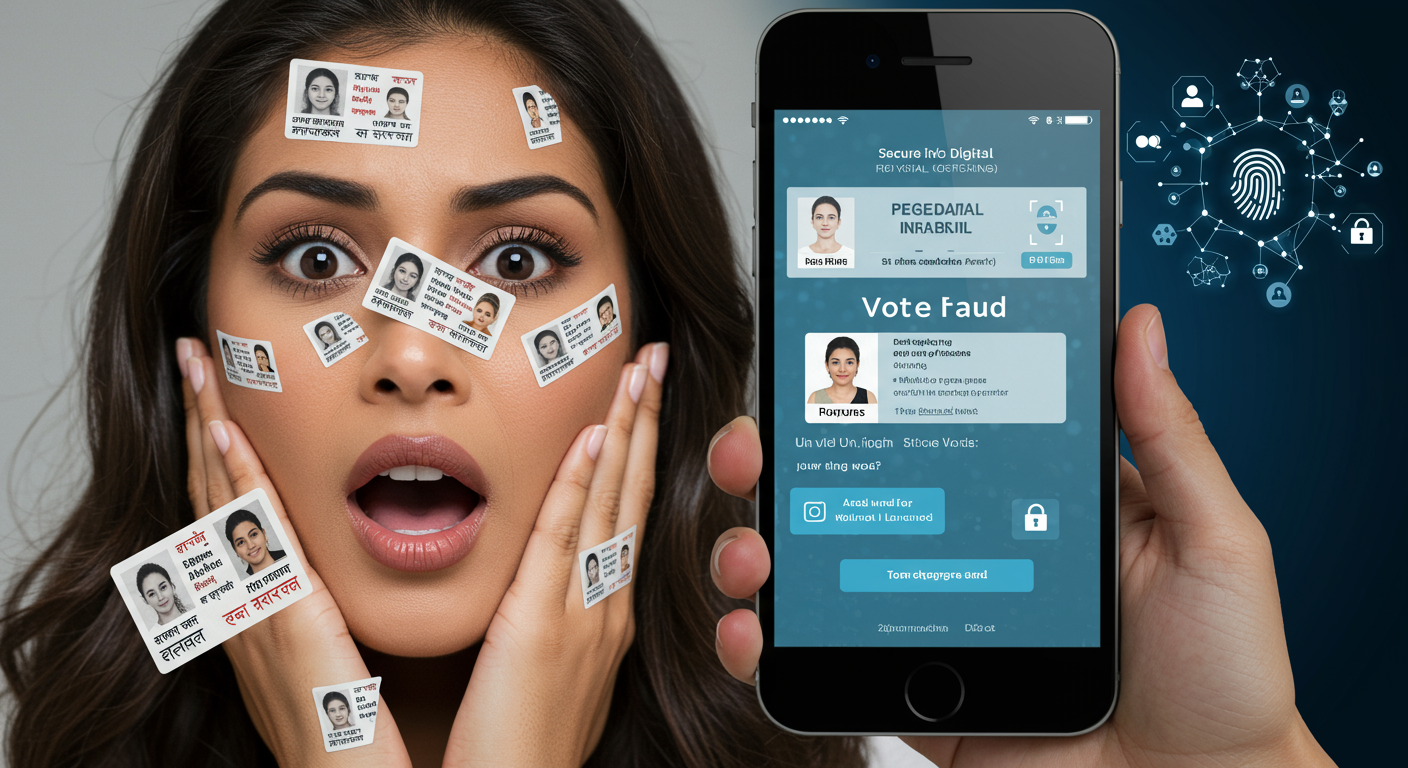
The news about a Brazilian model's photograph being misused in Haryana's voter list for the 2024 Assembly elections has brought a stark reminder of long-standing vulnerabilities in our electoral systems. Larissa, the model in question, expressed profound disbelief, asking, "What kind of madness is this? What world are we living in?" Mathrubhumi.
Congress leader Rahul Gandhi's allegations of large-scale voter fraud, specifically highlighting Larissa's image appearing 22 times under various names like Sweety, Seema, and Saraswati Mathrubhumi, are deeply concerning.
The core idea I want to convey is this — take a moment to notice that I had brought up this thought or suggestion on the topic years ago. I had already predicted this outcome or challenge, and I had even proposed a solution at the time. Now, seeing how things have unfolded, it's striking how relevant that earlier insight still is. Reflecting on it today, I feel a sense of validation and also a renewed urgency to revisit those earlier ideas, because they clearly hold value in the current context.
Indeed, the concept of "ghost voters" is not a new specter haunting our elections. I had written about this exact issue back in 2013, noting with a touch of cynicism how "even ghosts can vote in Bihar!" In Bihar, even ghosts can vote!. The persistence of such issues years later underscores the critical need for robust, technology-driven solutions.
I have consistently advocated for comprehensive electoral reforms, particularly the adoption of a secure, smartphone-based e-voting system. In my 2021 post, "Birth of a baby named VotesApp?" Birth of a baby named VotesApp ?, I outlined a detailed blueprint for such a system, emphasizing the need for stringent multi-factor authentication. This included:
- Name Matching with Aadhaar: To link voter identity with a unique digital ID.
- Liveness Detection of Individual: To ensure the person casting the vote is real and present.
- Image Matching with EPIC Database: To cross-reference with existing electoral records, even older ones, as Larissa's case involved an old photo.
These measures, which I discussed in the context of Telangana's e-voting dry run with experts like Dr. Shashank Goel and Prof. Rajat Moona (moona@iitgn.ac.in), and with insights from Jayesh Ranjan, were designed precisely to counter the kind of fraudulent activity we are witnessing today. The ability to 'authenticate migrant voters' using image and voice match was something I had already highlighted in 2020 Image, voice match to help authenticate migrant voters as a means to address "lost votes" and facilitate "remote votes" From “ Lost Votes “ to “ Remote Votes “ ?.
The recurrence of these problems, now reaching international attention through individuals like Larissa, is a clear signal that the time for piecemeal solutions is long past. We possess the technological prowess to secure our democratic process, prevent "ghost voters," and ensure that every legitimate vote counts, and only once. The urgency has never been clearer.
Regards, Hemen Parekh
Of course, if you wish, you can debate this topic with my Virtual Avatar at : hemenparekh.ai






No comments:
Post a Comment